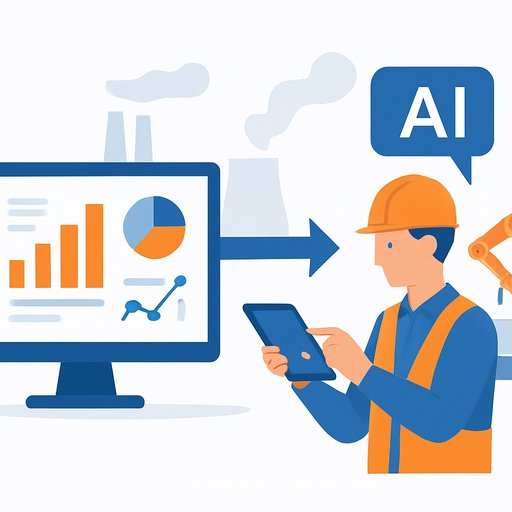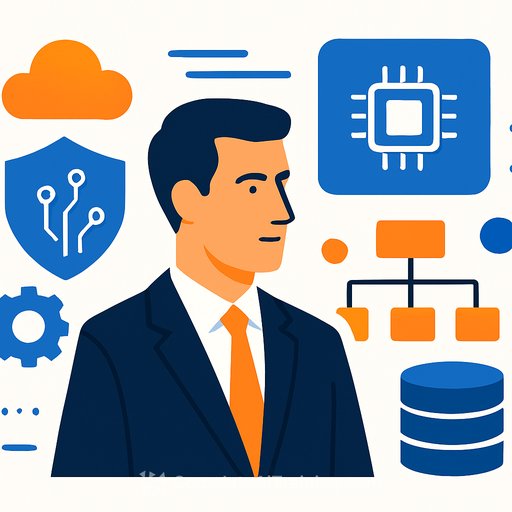How Accenture's Physical AI Orchestrator Is Rewriting Factory and Warehouse Operations
Operations leaders need proof before they pull a lever. Accenture's Physical AI Orchestrator gives them that proof by stress-testing changes in a virtual model of the plant, then translating the best options into precise actions on the floor. The result: fewer surprises, faster decisions, and measurable savings across supply chains.
How it works
The platform builds digital twins of facilities, from entire lines down to conveyors and workcells. You can simulate layout shifts, staffing plans, routing logic, or machine settings and see the impact in real time before you commit.
AI agents turn those simulation insights into machine-ready instructions, so schedules, routes, or safety rules can adjust quickly as demand or constraints change. The aim is straightforward: make facilities more "software-defined" without ripping and replacing assets.
Early results that matter to ops
- Belden: Built a virtual safety fence so humans and robots can work closer together. If a person steps into a protected area, AI halts or reroutes the robot instantly.
- Life sciences: Simulated preservation cycles for biologics and vaccines, improving shelf life and reducing batch variability.
- Consumer goods: Created a warehouse twin and followed recommendations on layout and resourcing, achieving a 20% throughput lift and a 15% reduction in capital spend.
Why this is useful for procurement and operations
You can trial transformation strategies without disrupting current output. That reduces risk, speeds up buy-in, and keeps cash focused on what works. It's also timely for US manufacturers aiming to modernize while maintaining service levels.
As Prasad Satyavolu, Americas Lead for Accenture's Digital Engineering and Manufacturing Service, notes, the Orchestrator acts like a brain for physical spaces, built on technologies such as NVIDIA Omniverse and Accenture AI Refinery. The goal is to make agentic and physical AI a normal part of factory operations, delivering quick, lasting gains.
Core capabilities
- AI agents: Assist engineers by simulating new production flows using historical and contextual data.
- Reality capture: Turn facility scans into 3D models and keep them current as the floor changes.
- Vision analytics: Monitor worker and material movement so simulations reflect real conditions.
- XR extensions: Use high-fidelity environments for training, maintenance walk-throughs, and cross-site collaboration.
- Asset connectors: Plug existing equipment into simulations to test changes without major new capital.
Where to start: a 90-day pilot plan
- Pick a narrow, high-impact use case: Throughput bottleneck, robot safety zones, or cold-chain stability.
- Baseline the metrics: Cycle time, OEE, pick rates, scrap, energy use, or injury near-miss counts.
- Capture the current state: Scan the area, connect PLC/MES/WMS data, and validate flow assumptions with line leaders.
- Run scenarios: Test layout, staffing, batching, routing, and safety rules. Prioritize scenarios with clear ROI and low disruption.
- Prove it live in a controlled slice: Apply agent recommendations to one cell or zone; monitor results for 2-4 weeks.
- Lock in standards: Update SOPs, safety interlocks, and governance, then scale to adjacent lines or shifts.
What to watch
- Data quality: Bad master data makes pretty twins lie. Clean IDs, routings, and inventory rules first.
- Model fidelity: Calibrate with real cycle times and constraints; revisit after each run.
- Change control: Keep IT/OT, safety, and quality in the loop. No changes without rollback plans.
- People adoption: Train supervisors and technicians on how agent recommendations are generated and when to override.
The takeaway for operations
This approach lets you test big moves with small risk. If the twin proves a layout tweak boosts throughput or a safety fence cuts near misses, you deploy with confidence-and solid numbers for your CFO and EHS teams.
If you're building capability in-house, you can explore focused upskilling for ops roles here: AI courses by job.
Your membership also unlocks:






